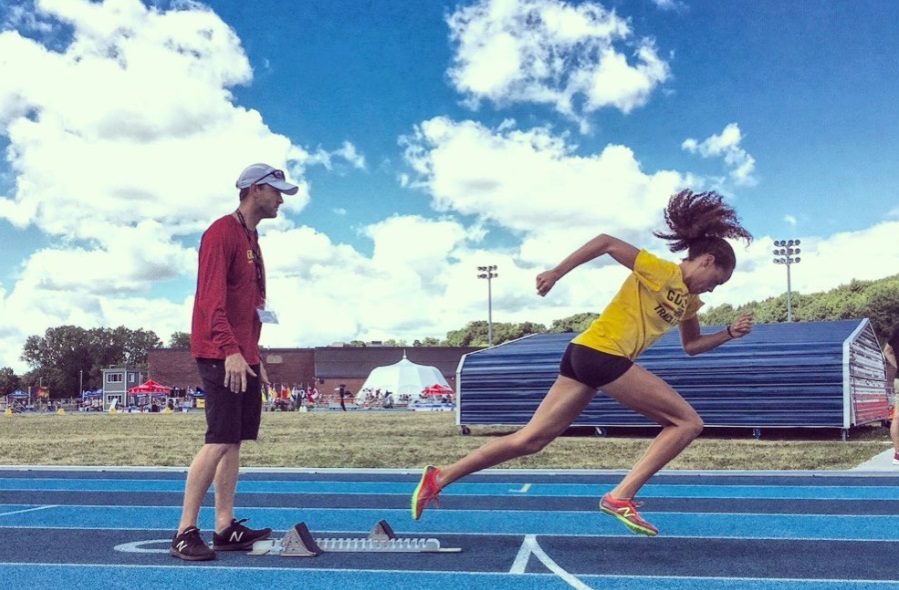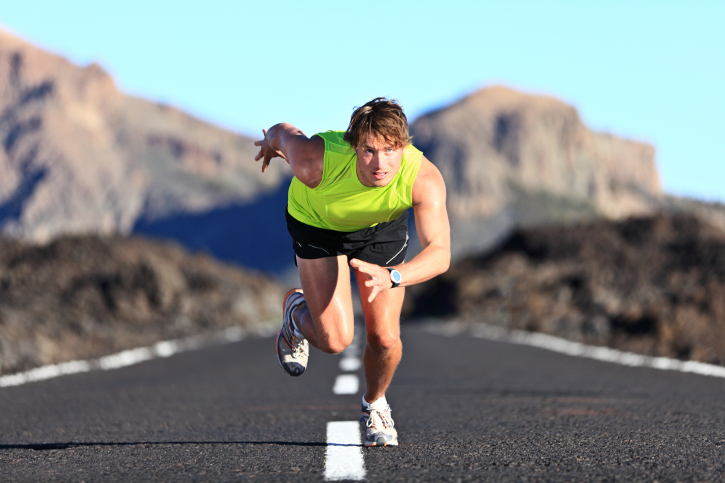Training advice from a sprint coach
Distance runners can learn a thing or two from sprinters

On the surface, sprinting and long-distance running appear to be complete opposites. In reality, there is more crossover than you might think, and distance runners can learn a thing or two from our fast-running friends. We spoke with Jason Kerr, head coach of the track and field team at Guelph University, to find out how distance runners can apply some of the principles of sprint training into their own programs.
https://www.instagram.com/p/Ba76GlbniEE/?utm_source=ig_web_copy_link
To begin, Kerr clarifies that the vast majority of your training and competitive improvements are going to come from a well-thought-out running program combined with hard work and discipline. Still, he says, there are some things all distance runners can learn from sprinters and sprint coaches:
Prioritize speed
A lot of coaches pay lip service to speedwork, but never truly prioritize it, Kerr explains. He says that if speed and power development are important, then you need to devote a full practice every few weeks to things like speedwork, plyometrics, Olympic lifting, medicine ball throws, and so on. “Train like a sprinter once in a while, and you will see marked improvements in mechanics, gear changing and ‘kicking’ ability,” he says.
Since sprint work is not specific to most endurance athletes, he encourages runners to prioritize this type of training during their general preparation phase, when they’re further away from their competitive season and there’s less pressure to hit touchstone endurance workouts. Kerr also cautions runners not to try and move the ceiling up on speed with tired legs or after long runs. “While this may have a place in training for other purposes, it is not likely to increase overall speed capabilities and may increase your risk of injury,” he says. “Sprint full out when you are well-rested!”

Move differently
Running is very repetitive and often leads to tissue damage and injuries. All of this general training (like plyometrics, box jumps, hurdle drills and medicine ball throws) can force the body to move on multiple planes and through large ranges of motion, which over time can help fend off repetitive movement syndromes. Various static and dynamic flexibility routines, sprint drills, general strength/calisthenics, medicine ball work and hurdle mobility can all be organized in your weekly training schedule to provide much more movement variety in your training plan. ” This is one way to reduce your physiotherapy bill for next year,” says Kerr.
Use strength work to complement your training
“Many distance groups I’ve been around have not been comfortable in strength and conditioning settings, usually because the coach doesn’t have a lot of experience in this space,” says Kerr. “Keep this training element simple and complementary and it will pay dividends in the long run.”
Kerr says an easy way to get started is to organize your strength training into two buckets: weighted circuits (i.e. with light resistance), and general strength (body weight and medicine ball circuits). He suggests saving your weighted circuits for days when you’re doing harder workouts like interval training, which will help develop strength and also potentially kickstart the recovery process. On your easier running and recovery days, stick with bodyweight circuits and medicine ball work that gets you moving in all sorts of ways without inducing fatigue and soreness that will affect the next days’ session.

RELATED: Strength training: how much time do you really need to spend in the gym?
Finally, if you’re really serious about being more effective in the gym (and you’re financially able), Kerr says working with a strength and conditioning coach to intelligently design and implement more advanced forms of weight training and plyometrics is a great way for distance runners to improve their overall performance.


